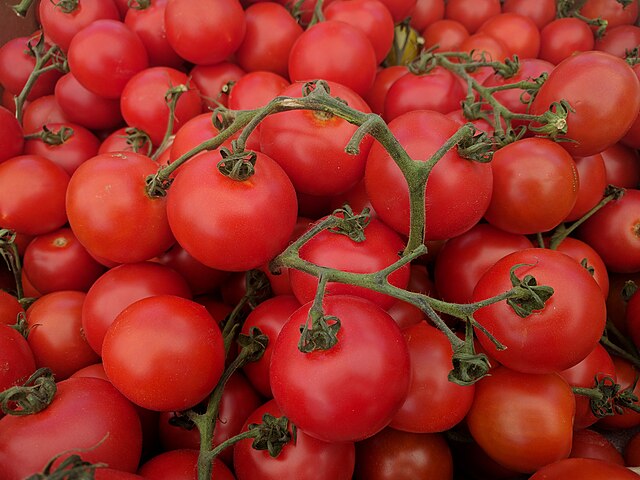Relative market steadiness informs tomato supplies across the United States end September 2025, with deliveries hovering from light to moderate.
According to the Tomato Fax Report by the U.S. Department of Agriculture (USDA) on September 29, most terminals were espousing ‘about steady’ trade.
In central California, conventional tomato deliveries at 4,625 units (each 40,000 pounds) were slightly above 2024’s 3,615 units, year-to-date (y-t-d).
Meanwhile, Mexico’s and Canada’s imports into the U.S., through New York, Baltimore and California either showed steadiness or moderation.
Canada averaged 242 shipments of conventional tomatoes before September 29, an improvement from last year’s mere 20.
Mexico had by the 29th shipped in 97 units of conventional types, way lower than 2024’s 108 at a similar timing. These shipments exclude greenhouse, organic, vine ripe, cherry, Roma and mature green tomatoes.
Organic, Grape Type, Vine Ripe and Cherry Tomatoes
Meanwhile, Alabama (234 units), east Tennessee (741 units) and Virginia (224 units) faltered y-t-d in their deliveries of mature green tomatoes.
The same was true for Alabama’s vine ripe tomatoes, which by the 29th totaled 531 deliveries, 4 units below September 2024’s.
Mexico’s cherries via California slipped to 18 units from the 31 of a year ago while Canada’s via Michigan upped from 115 to 169.
Grape type tomatoes had by end September 2025 garnered 1,652 unit deliveries, down from 1,850, y-t-d.
Nationwide plum/Roma varieties totaled 6,194 units by the 29th, mirroring the 6,241 of a corresponding timing in 2024. But they still have a long way to go before they echo the final tally of 2024 of 41,884 units.
Given the light market supply situation, farmers in the top producing-state of Florida are courting decent prices.
Florida’s large-scale farmer, Bob Spencer, told Bay News of the ongoing harvest in Alabama and Tennessee where “markets have improved.”
Thus, from Alabama to California, the fall domestic tomato market in the United States is building up lightly. The market lightness partially owes to the imposition of a 17.09% tariff on Mexico’s imports in mid-July 2025, discouraging imports. But how does fresh tomato trade fare domestically over an extended period? The statistics below find answers.
United States Domestic Tomato Market Statistics
Although fresh tomatoes cultivation is ubiquitous across the United States, commercial production is concentrated in 20 states. California and Florida switch roles regularly as the top production centers. California alone was home to 263.7 million cwt of fresh market tomatoes in 2023, according to the Ag Marketing Resource Center (AGMRC). The total federal production value of fresh market tomatoes amounts to $715.63 million, as of 2023.
Do tomatoes have high consumption rate domestically in the U.S.?
An AGMRC report finds high potential for tomatoes in the U.S. as the 2nd most consumed vegetable, behind potatoes. While fresh tomatoes had a consumption rate of 20.3 pounds per person per year in 2023, processed types averaged 73.3 pounds per capita.
Where do most conventional tomatoes in American markets come from?
Around 17 places, both local and foreign, contribute 100% conventional tomatoes available in federal markets. This is according to a report examining domestic sales of conventional tomatoes between early November 2023 and end October 2024. Four of these markets, namely Mexico, Florida, Canada and central-California supplied 89% of all produce during the above period. The other 11% emanated from 13 other states and countries like Alabama, Tennessee, Georgia, Michigan, Japan, New Zealand and the Dominican Republic.
